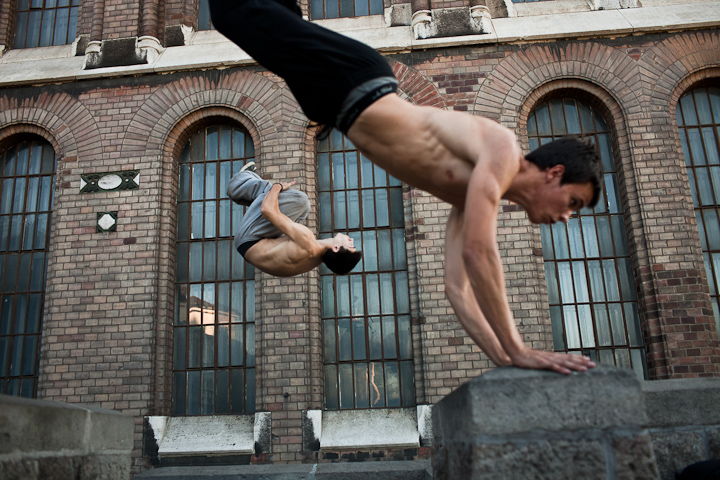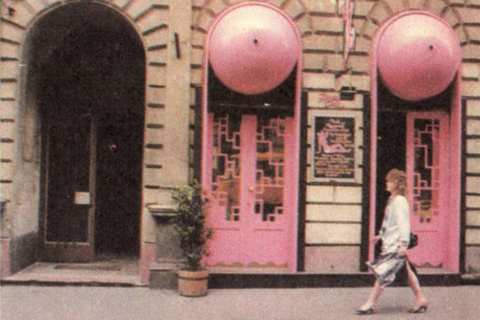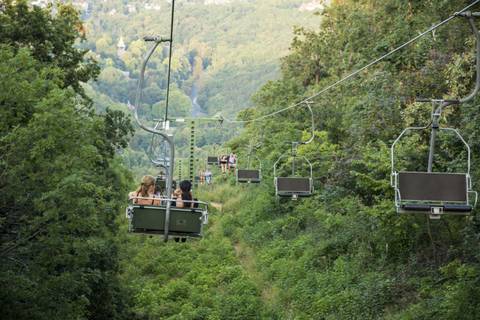The originally French parkour has no rules. The art of running does exist outside of the movie theaters and it is not rare in Budapest that young kids run from one place to another without being stopped by anything on their way. One of the best local parkour runners, Ábel Kocsis has been using the Hungarian capital as a playground for more than 8 years. We had the chance – because he stopped – to catch him for an interview.
WLB: When and what was your first encounter with parkour?
Ábel Kocsis:
Well, I saw the movie Yamakasi in 2004 when I was 13 and I loved it. We instantly ran to the nearby playground, started to do flips, climbed on buildings and balconies. A couple of months later I googled a little bit and found out that there really was a sport called parkour, so I started to get into it more.
WLB: What did you start to practice first? How much time did it take to learn the basics?
Ábel Kocsis:
You can do many things right at the beginning, you just have to try. Anyone can quickly learn how to do backflips or jump over fences. What’s hard is to learn is to jump big. It’s important for you to be in a good shape, to be strong and flexible, but the most important thing is to be completely focused. You have to know your limits, you have to be aware of what you can and cannot do. Once you have decided to do the jump, you can’t change your mind or get scared. What you should know the best from the first moment is how to fall, roll and land properly.
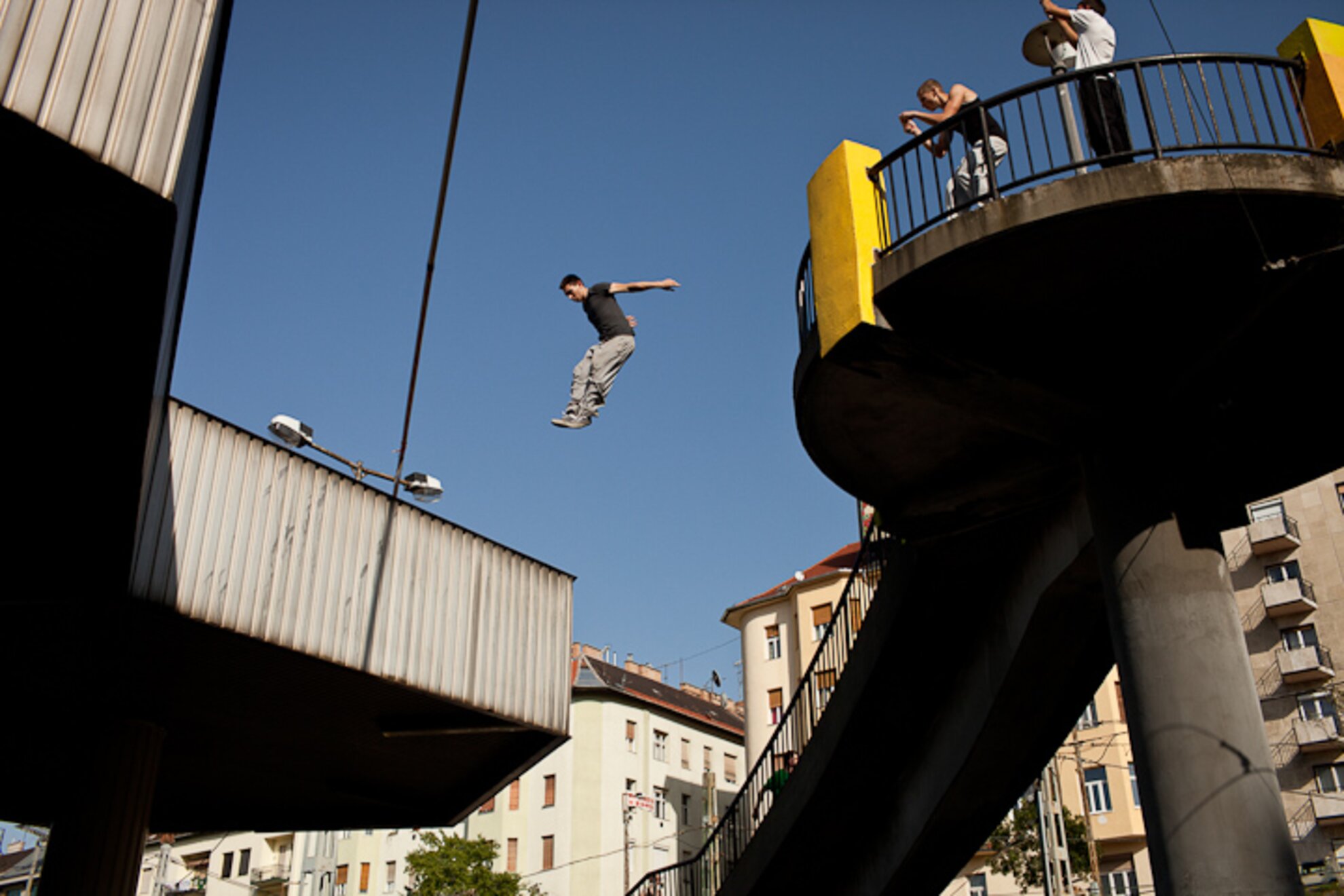
WLB: Do you have a favorite trick?
Ábel Kocsis:
Not really. But there’s a trick that made me kind of famous, its name is “precise”. It’s about jumping on a thin piece of wall or rail and the point is that you have to land very precisely in order to keep your balance and not to fall. This is what I’m the most proud of. I did it in the CastleDistrict; I jumped from a wall to another wall. Since then, some others have done it too but still, I did it first and the distance is pretty significant. I don’t think that too many people would dare to even try it. There are many tricks in parkour, because parkour itself has many different styles. Real parkour is only about running without ever slowing down, so acrobatic moves are not really effective there. However some people only do acrobaticelements, while others do parkour in a dance-like way with break-ish moves.
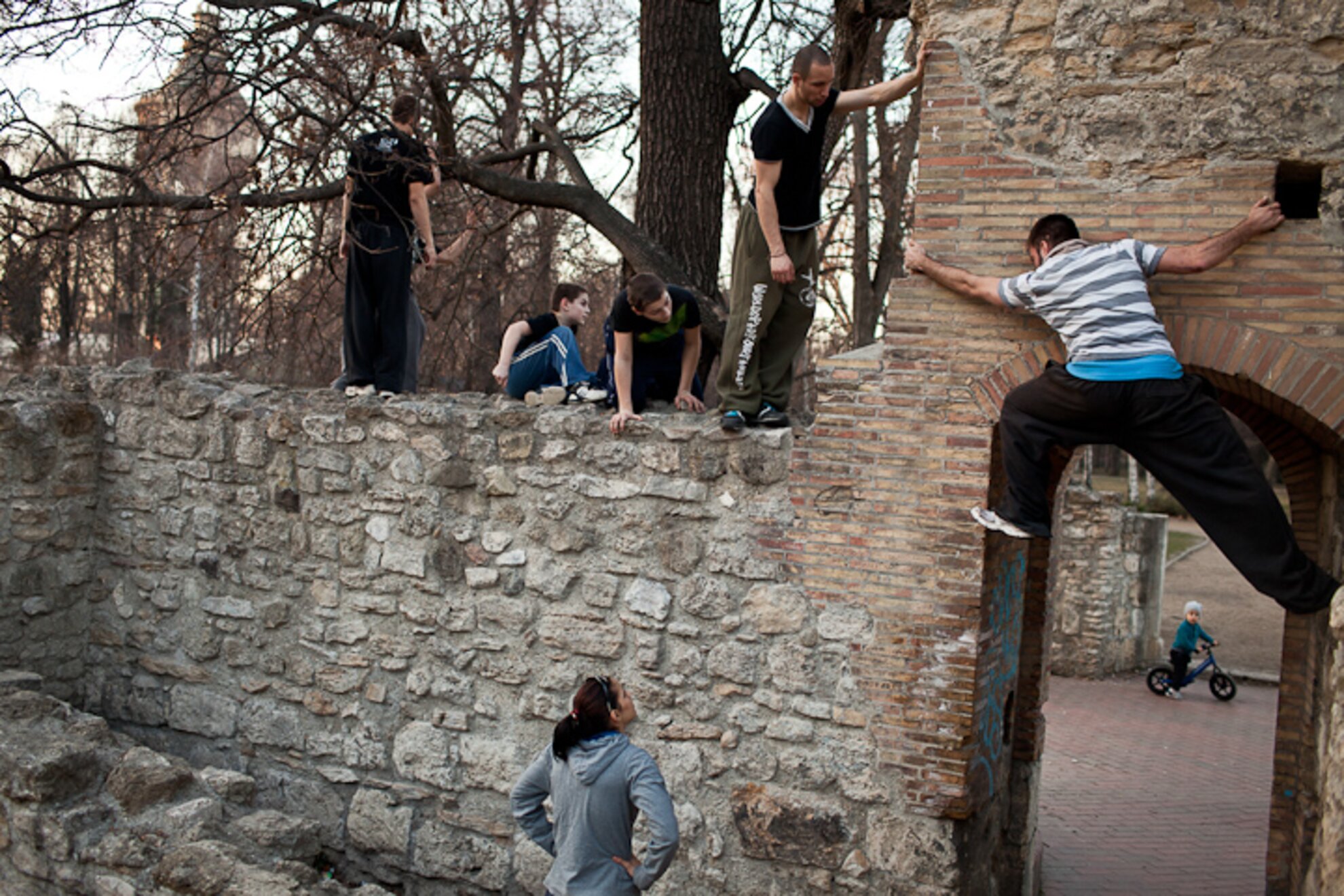
WLB: How do you practice? Do you have a certain training program?
Ábel Kocsis:
We discuss the place and the location and we meet up. First of all we warmup then everybody starts to practice something while other keep watching, helping and cheering. Back in the days we used to train seven times a week. Now it’s only about three but it depends. Fortunately we started to teach parkour in Honvéd Gymeveryweek on Wednesdays and Sundays. It’s equipped with stretchers and a foam pit so you can practice in a safe environment. I also started to work out, although I never did it before. Most of the time we only do pushups so we have no training programs to follow. The whole thing is just about being together with friends, doing it for fun and not about showing how cool we are. We are a big group of friends. Sometimes only two or three of us show up for practice, the next time ten or fifteen people… In the whole city there are about a hundred parkour runners but only thirty of them do it seriously.WLB: Do you have a favorite spot in Budapest?
Ábel Kocsis:
I’d say that there are several good places in Budapest. We often go to Margitsziget (Margit Island), visit Gül Baba on the hill, run in Városliget and at Stadionok but our big favorite is the Castle District. The place is starting to be famous for our presence; in the summer sfr example tour guides tend to take little trips with the tourists to see us practice and they always take photos. The only problem is that in the 1st district there’s a law that you can’t do anything on the street that does not fall in the “proper use of things” category. Fortunately nobody has been fined yet, at least as far as I know, but we still don’t get it…we never break things with our rubber-sole shoes. Plus, whenever we see a white wall, we never jump on it because we don’t want to make it dirty.WLB: Do you improvise when you practice, or you make plans before you start?
Ábel Kocsis:
We don’t really improvise. Most of the time we plan what we want to do, then we go there and check how slippery or unstable things are. But in most cases we already know the place. Of course it’s different when we have to run away from the cops. Then we don’t care much, we just run and jump wherever we can.
WLB: Do you have a lot of problem with the police?
Ábel Kocsis:
It happens sometimes. Most of the time, it’ nothing serious. Last time for example we climbed on a church in the Castle District, they came there and told us to get down and that was it. But I think once they tried to run after us but quickly realized they have no chance. Sometimes they don’t even see us, for example when we climbed on Gresham Palace, no one cared. If they had seen us they would have probably shot us on sight.
Once a friend of mine decided not to run away from the police, they decided to be nice and talk it over but the cops beat them up in the car. I’m not saying all the cops are bad, we have met many who were nice to us and understood that we were practicing. They are all different I guess.WLB: What do people think about parkour?
Ábel Kocsis:
It mainly depends on their age. Most young people like it, some of them don’t…those who know what parkour is are interested but old people don’t tend to be nice. They might even believe that it’s vandalism.
WLB: Are there any parkour competitions?
Ábel Kocsis:
Yes there are some. In 2011 went to Kuwait to a Red Bull event and in 2012 I attended another one in Switzerland where we had pretty good results. They invited only 25 people and they gave scores according to what you did, how stable you were. 10 people could progress to the finals and we - my friend Adam Nemeth and I - were among them. Earlier in 2008 and 2009 we went to the Art of Motioncompetition. In 2009 I came in second place.
Fortunately there are no Hungarian competitions. I don’t really like rivalry.
Parkour is about is being together with friends and having a good time. If we had events in Budapest
I’d probably be a judge or something like that. It doesn’t matter who is better than the other. We are a group of friends and we stick together no matter what happens.WLB: Have you ever had serious injuries?
Ábel Kocsis:
Oh yeah, I had a big one in 2010. I went to Austria for the Art of Motion and as I was warming up I jumped on a rail, I slipped, fell and broke my shinbone and my knee. Now screws and metal plates hold the whole thing together. Austrians did a great job. My friends said doctors would have cut it off in Budapest. But my knees hurt anyway; my joints are not very good. I mean it’s not a rule that they have to get damaged if you do parkour, it mainly depends on genetics and the way you jump. I have a friend who practices just as hard as I do and has no problems at all.
WLB: Do you often find yourself in dangerous situations?
Ábel Kocsis:
Sometimes. But most of the time you must make it if you don’t want to get hurt. In a dangerous situation you really focus on what you’re doing and only jump if you’re at least a 100% sure about success. For example if you decide to jump on a rooftop and you fail, you might die. I’m not really afraid of that because I never do the leap of faith. I only jump if I know I’ll make it. I know exactly what I can and cannot do.WLB: What are your future plans with parkour?
Ábel Kocsis:
Currently I’m a student at the Faculty of Physical Education and Sport Sciences of Semmelweis University because this is where I was accepted, but I want to make a living out of parkour later. I’d like to have a big gym where I can teach it and organize events. For me this is not just a hobby but also a lifestyle. I see the whole city differently because of it; when I’m on the tram I don’t care about what’s going on, I only see rails and stairs and things that I can jump across. I love parkour because through it I can really control my body. If I want to jump somewhere I can, if I want to stop somewhere I can and I always land exactly the way I want to land. This is why I do it. Fortunately lately I have been able to make money with it; I’ve been in commercials, magazines, and music videos. If anyone needs something special, fortunately they call me.
